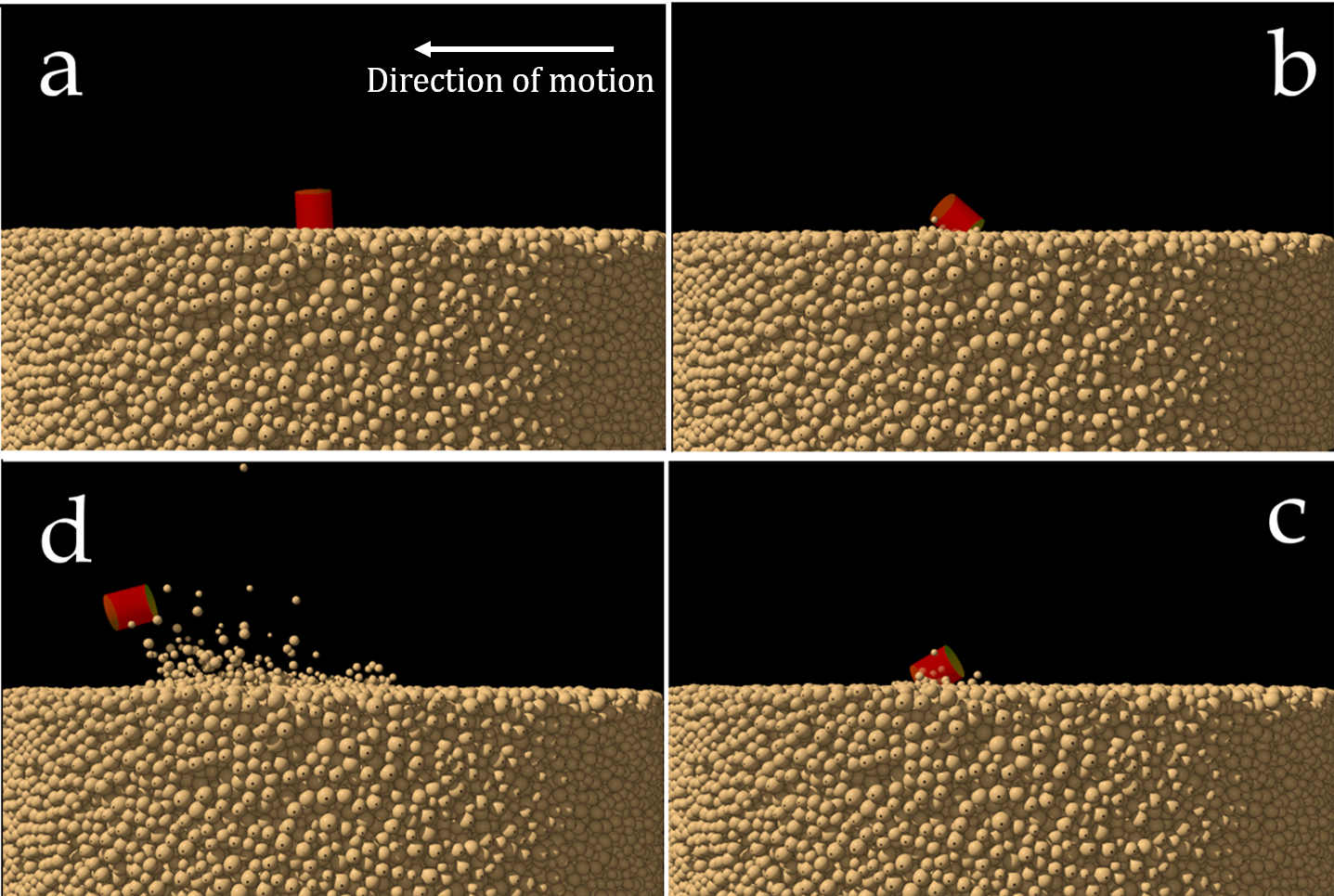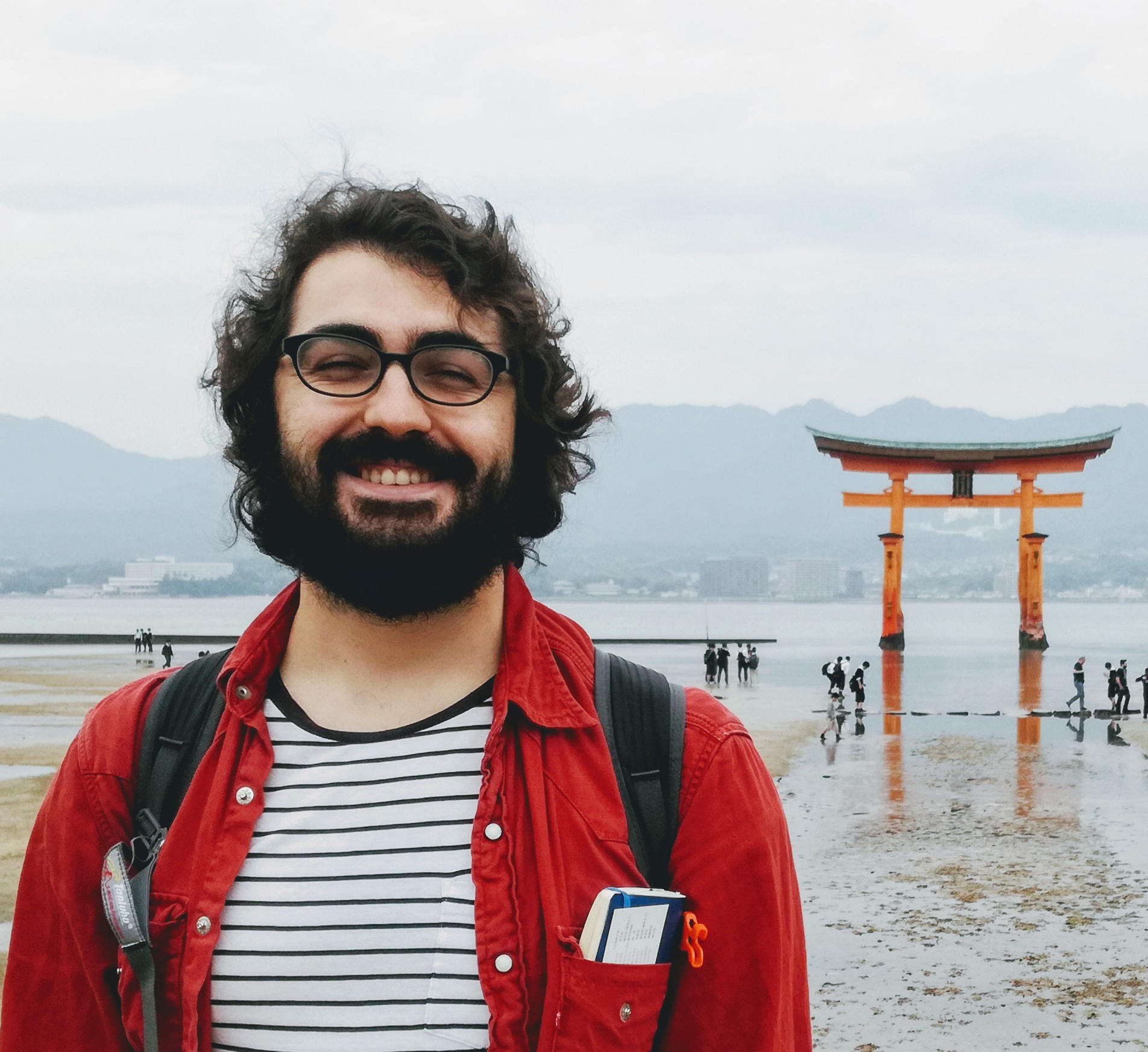August 06, 2020
Bouncing balls on the surface of an asteroid
SOKENDAI Student Dispatch Program program year: 2019
Onur Celik, Space and Astronautical Science

It is often beneficial to use other geometric shapes from the spacecraft design point of view or to accomplish specific objectives. In the above case cylindrical object is used to ensure better imaging of the surface.Much like dropping a tennis ball on a beach sand, objects interacting with granular surfaces on asteroids would also make craters even at low speeds. If cratering process do not take up all the initial energy, they could bounce back after an impact. Modelling and understanding this process are the primary goals of this research.
Early solar system was a violent place. The gravity of the planets attracted asteroids and comets and were bombarded by them. Even life on Earth might have come from asteroid and comets, commonly known as small bodies. But the planets are good cheaters, they hide the signs of those impacts (what we call "craters") with more impacts, volcanoes, earthquakes and other geological processes. But small bodies attract less impacts due to their lower gravity and do not have processes like volcanism (at least to our knowledge) so they actually keep a journal or a record book how our solar system might have formed. This is why, for example, Hayabusa2 spacecraft visits asteroid Ryugu and brings back samples from that. We also send little robotic spacecraft to asteroid surfaces from large spacecraft, which are focused on specific tasks such as measuring gravity or temperature, as we would like to understand asteroid surfaces better.
What's more, recently it was found that some asteroids throw little sand particles from their surface and those hit back to the surfaces. Both of little spacecraft and particles hitting back to the surface make little craters but this time at much lower speeds, much like a tennis ball hitting on a beach sand. On Earth, the ball is likely to hit and get stuck on the beach. On asteroids, there is a chance that the ball might actually bounce back, but this time it will go up less as it spent some of its energy to deform the beach surface, that is, making craters. While this may not look important on Earth, it is significant in an asteroid environment. Hayabusa2 target asteroid Ryugu has million times lower gravity than that of Earth, so a leisurely walk on an asteroid could actually lift a person such he/she may not be able to come back. It is a similar logic and if we can model how much of a tennis ball jumps after an impact on an asteroid surface, this would help us designing spacecraft that touches asteroid surfaces, like Hayabusa2.
My research focuses on understanding this cratering process and modelling mathematically, such that we can calculate how much a tennis ball will jump on an asteroid surface when they do. To be more precise, in my research, I found out that small craters on asteroids actually resemble the large ones on Earth and the Moon. I used the mathematical models that were developed for those and applied to small craters on asteroids. I developed those models further to calculate how much energy is used to make a crater, and later how much energy that a tennis ball might have after this process such that it would jump around on an asteroid. Our current understanding of asteroids is limited, therefore simplified mathematical models are the first step, hence a spherical object like a tennis ball. If we would like to do more complex studies, for example for a spacecraft, we can use the basic mathematical understanding to interpret the results, but we will have to do simulations for the exact behavior, like I did as shown in the figure.
Period of Stay
30/07/2019~01/02/2020
Country and/or City
Boulder, Colorado / United States of America
Visiting Institute, Host, or Meeting
University of Colorado Boulder (Host: Prof. Daniel J. Scheeres)
What you learned and achieved during the visit
During my visit, I had a chance to work with a world-renown researcher of astrodynamics and planetary science field and at a world-class university. This not only helped with my research but also I was introduced many other researchers through this opportunity which opened up new opportunities for my future. I also made many new friends and experienced American culture through interactions and occasional travels.
Department of Space and Astronautical Science, Onur Celik
Onur Celik was born in Ankara, Turkey. After completing his undergraduate in astronautical engineering at Istanbul Technical University, he moved to Europe to continue his master's degree in Sweden and the UK. Onur lives in Japan since April 2016 and PhD student at SOKENDAI since October 2017. Onur enjoys travelling, reading, sports and learning languages. He speaks Turkish (mother tongue) and English fluently, Swedish and Japanese in conversational level. He translated Ian Stewart's "Calculating the Cosmos" book from English and it was published as "Evreni Olcmek" (in Turkish) in September 2018.

